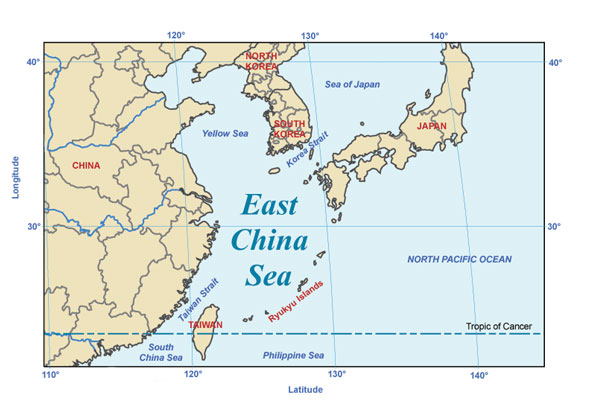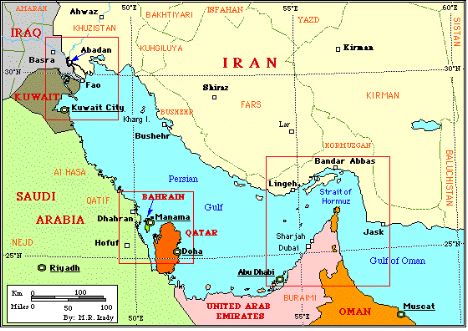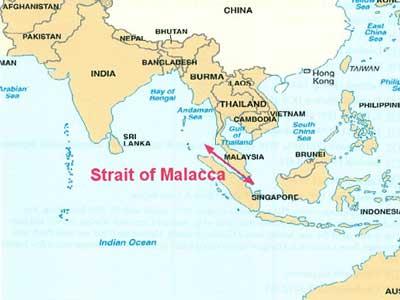 Future clashes in the Asia-Pacific highly likely due to modernizing navy and disconnect between China’s perceived “rational” behavior with the international community’s understanding of their actions.
Future clashes in the Asia-Pacific highly likely due to modernizing navy and disconnect between China’s perceived “rational” behavior with the international community’s understanding of their actions.
As of 2008, oil represented 17.2% of China’s total share of primary supply making it the second widely used energy source after coal. Although coal is widely used in China, its share has been decreasing due to its pollutant nature. External and internal pressures to reduce carbon emissions also have a factor, as well as the overall health and environmental costs it poses to their society. Oil, on the other hand, continues to increase as China’s middle class rises up and starts adopting private transportation. This phenomenon has concerned Chinese officials, as they begin to think about how China will be able to source enough oil to satisfy its population? And more importantly, how can they secure a continuous flow of it?
China’s Oil Dependency
As of 2009, China was using a total of 8.3 million barrels of oil each day with foreign oil accounting for more than half of their daily usage with 4.3 million barrels.
 If we isolate the foreign oil and investigate the sources in which the Chinese government is importing their oil from, we can see that out of the 8 countries: 6 of them are from the Middle East, 1 is from Africa, and 1 is close by in Russia. In terms of distance, this is a highly unstable and potentially dangerous situation for China as they are overly dependent on Middle Eastern oil. To make matters worse, the Middle East is politically unstable and disruptions to supply can happen at any point of transit.
If we isolate the foreign oil and investigate the sources in which the Chinese government is importing their oil from, we can see that out of the 8 countries: 6 of them are from the Middle East, 1 is from Africa, and 1 is close by in Russia. In terms of distance, this is a highly unstable and potentially dangerous situation for China as they are overly dependent on Middle Eastern oil. To make matters worse, the Middle East is politically unstable and disruptions to supply can happen at any point of transit.
The Chokepoints
The Strait of Hormuz: Center of Middle Eastern Instability
As an oil importer, China is fortunate that it has as many as 8 suppliers for its imported oil. However, it continues to be at risk as Russia is the only supplier with a direct pipeline into its territory and only represents 6% of their total foreign oil imports. The other 77.5% (minus Angola) are found in the Middle East and need to bypass the Strait of Hormuz in order to reach the Indian Ocean on its way to Asia.
The Strait of Hormuz is a narrow sea lane located in between the Persian Gulf and the Gulf of Oman. At its narrowest, the Strait of Hormuz is only 54 km wide. This strait are of strategic significance as the oil and gas producing countries in the Middle East (Saudi Arabia, Qatar, Kuwait, Iran, Iraq, UAE, and Oman) all need to bypass this sea lane in order to export their oil and gas products to the global market. In 2009, a total of 15.5 million barrels of oil passed through this strait everyday representing 33% of all sea-traded oil and 17% of the world’s daily total.
As a result, China increases its investments and activities in this area are to ensure the safety of its oil imports from this region. From the Chinese perspective, these stakes will help China maneuver its way into negotiations for increased protection, preferential treatment, and possibly even deploying their own security forces to protect their oil tankers. These measures are all developed to combat the regional instability, as well as threats of piracy and terrorist activities in the Persian Gulf.
Strait of Malacca: A Pirate’s Dream
The second chokepoint that oil tankers need to bypass on its way to China is the Strait of Malacca. The Strait of Malacca is a long narrow stretch of sea in which ships need to bypass Malaysia, Indonesia, and Singapore in order to move further up into the South China Sea and beyond. It is a chokepoint for many countries in the Asia-Pacific and is estimated to bring in 13.6 million barrels of oil per day from overseas locations in 2009. For China, this represents more than 80% of their foreign oil imports (minus Russia).
This strait is also geographical difficult since at its narrowest, it is only 2.74km wide and it is 900km long. Therefore, expert navigation is needed as the risk of accidents and oil spills present problems to not only neighboring countries but also countries heavily dependent on oil shipments. The Strait of Malacca also has a history of piracy. In recent years this has been substantially curbed, but the theft of oil tankers is still not out of the ordinary as it can carry a large ransom.
Due to these risks, China has been active in forging relationships with countries such as Sri Lanka and Myanmar to establish naval ports, refineries, or pipelines to dock their oil tankers.
Taiwan Strait: Bound by Political Tension
 The last chokepoint is more of a political matter than of actual geographical risk to Chinese oil imports. The Taiwan issue has been long debated since the PRC has maintained that Taiwan is part of their country, while Taiwan itself has maintained that they are their own entity and on some occasions have proclaimed that they are the rightful government to today’s China. Either way, the Taiwan Strait becomes a security issue once political tensions are high or the United States begins to sell arms to Taiwan again.
The last chokepoint is more of a political matter than of actual geographical risk to Chinese oil imports. The Taiwan issue has been long debated since the PRC has maintained that Taiwan is part of their country, while Taiwan itself has maintained that they are their own entity and on some occasions have proclaimed that they are the rightful government to today’s China. Either way, the Taiwan Strait becomes a security issue once political tensions are high or the United States begins to sell arms to Taiwan again.
Recently, this has not been much of an issue since Taiwan and China have been meeting to discuss the possibility of a peace-pact. However, peace is not always on the agenda and the political atmosphere should be gauged through the rhetoric of Taiwan and China’s political leaders. In either case, the Taiwan Strait should not be out of consideration when considering security risks to China’s oil and economic tankers.
Explaining China’s Naval Activities
If we look at these through the lens of energy security, or even the broader lens of seaborne economic activity, China’s actions are easily understood.
Let’s first take the Strait of Malacca as an example. The Strait of Malacca was originally protected by Indonesia, Malaysia, and Singapore. However, these countries were unable to combat piracy in this area and had to enlist the help of the Indian navy. The Indian navy regularly helps with drills and cooperative activities in the area.
If we move onto the South China Sea, the navies of ASEAN, the American Navy and sometimes the Indian and Japanese navy are all present and greatly influence the maritime politics in the region. There are also some “1,000 oil tankers” which are not owned by the Chinese and an additional “4 airfields” on the Spratly Islands which are also not Chinese.
These points all threaten China’s national security as other countries are exerting influence in what they believe to be their backyard. As a result, many reports of China modernizing its naval capacity is not irrational, but logical to the Chinese government as they will not only be able to go much further, but will also be able to protect their interests at the chokepoints described above. The construction of a modern navy has also allowed China to create the “String of Pearls,” or docking ports for its tankers from the Persian Gulf to the mainland.
Greater Clashes in the Future Likely
In my opinion, these chokepoints and sea security issues serve as strong points of interest for Chinese governmental policy as they have to secure their growing interests overseas. Their reliance on maritime trading will not end anytime soon and they will be going head to head with many of their neighbors in East Asia, Southeast Asia, and South Asia.
At the moment, many countries in the Asia-Pacific view China with apprehension and fear for their growing size and power. As a result, countries in the region will likely link together to deter China from influencing the region too much. For instance, Japan is currently deepening ties with ASEAN countries, in an act of defiance against China. Vietnam and India are currently cooperating to fight against China over the Spratly Islands to begin exploration and possibly drilling of oil and gas reserves under the seabeds of the South China Sea. India and Japan are beginning to conduct closer ties, which may result in joint-naval practices. These countries are all cooperating without the inclusion of China to forge alliances in future standoffs with the imposing giant.
China also risks being isolated by countries in the Asia-Pacific due to its continuing insistence on bilateral talks over multilateral talks. This strategy does not make China the stronger power and the nonexistence of compromise in China’s strategy will be its downfall as it competes with its neighbors for increasing amounts of fossil fuels, territorial seas, disputed islands, and the rights over which navy can conduct practices in the Pacific and Indian Oceans.
For in-depth analysis of China’s conflicts in the South China Sea and the Spratly Islands click here.



How can territorial disputes be settled with multilateral talks? That’s an insane proposition.
And you’re misinformed on Taiwan. The official ROC stance has always been that mainland China is part of the ROC, and Taiwan is a province of ROC; not just on “on some occasions.”
The territorial disputes of the Spratly Islands and Parcel Islands are currently being disputed by China, Vietnam, Malaysia, Indonesia, the Philippines and Brunei. Majority of the negotiations in the past were done bilaterally, however, this has not solved the issue and instead has made the continuation of future negotiations more difficult. Why? Because states keep making contradictory agreements like seen in Vietnam’s case that agreed to establish a communication channel and plans to discuss the Spratly Islands with China and two days later make agreements with India to explore and drill in the same area (also without China’s agreement or input). Let’s also not forget to mention the incident with the Philippines and a Chinese fishing vessel the other day. These bilateral agreements have created a heated atmosphere, and multilateral negotiations are suggested in this arena because it is not just two countries who are part of this ordeal.
As for Taiwan, I agree with you that the official stance of the government has always been maintained as such. However, in reality, Taiwan’s attitudes toward its mainland neighbor changes according to the political climate. Taiwan’s former president Chen Shui-Bian and his government, during their 8 years in office maintained that a pro-independence position that strained ties between China and Taiwan. In his eyes, Taiwan’s constitutional article 104 (banning attempts and conspiracies with foreign governments to overthrow the island’s government) means that they are their own entity. Former President Chen Shui-bian has also recently charged current President Ma Ying-Jeou for going against this article for his softer stance towards China and foregoing Taiwan’s sovereignty for the sake of greater collaboration with the Chinese government.
The law provides the punishments that include the death sentence for any Taiwanese citizen found guilty.
Pingback: 3 Reasons Why Shale Gas is a Pipe Dream in China- Part I « Energy in Asia